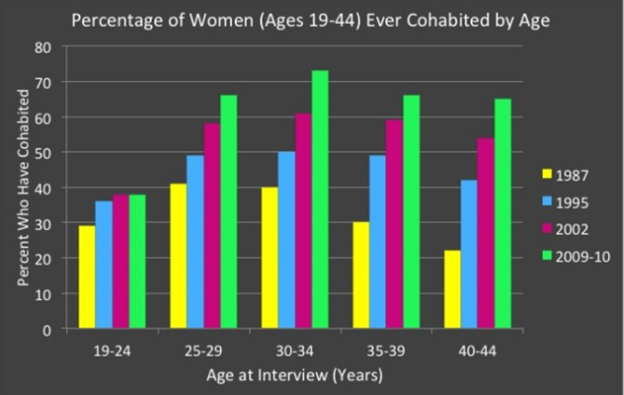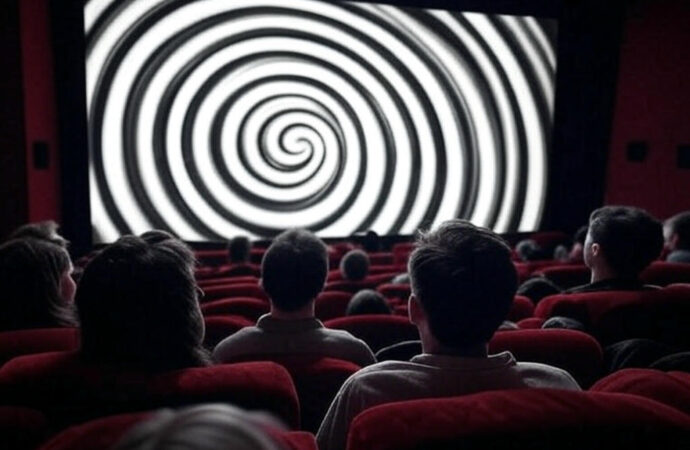President Donald Trump unleashed another unorthodox idea the other day by floating the concept of tariffs on movies not made in America. Those in the movie industry “are downright apoplectic,” CNN reported, concerned that such an initiative will tank their business.
I’m not sure what to make of this idea yet, as I can see benefits on both sides of the coin, but as others have observed, Trump at least gets points for consistency in applying his policies.
This announcement did get me thinking, however. Everything in this life comes and goes, rises and falls. There’s no law saying Hollywood is exempt from such cycles. Whether or not Hollywood dies a slow natural death on its own – as it seems to currently be doing – or if it’s killed off by tariffs as many movie executives fear, it has accomplished a lot in terms of influence over the years … for better or for worse. In fact, thanks to the media industry, many of us have subconsciously swallowed a number of lies that continue to influence our behavior and actions today.
Consider, for example, the rise of cohabitation in recent years. As the chart from Institute for Family Studies below shows, the prevalence of cohabitation steadily increased in recent decades, with rates rising from around 30-40% in the 1980s to over 70% in 2009-2010. More recently, it was noted that even Christian evangelicals – those normally assumed to have strong biblical principles and morals – cohabit at a rate of around 60%.
Yes, I know full well that correlation isn’t causation … but isn’t it rather suspicious that this cohabitation explosion happened relatively quickly after the Hollywood Production Code – which sought to maintain standards of decency regarding sexuality and other matters – ended in 1968? Today, finding a couple depicted in media not cohabiting before marriage seems far more unlikely than the other way around.

Closely related to cohabitation is the issue of divorce. Although those rates have declined in recent years – likely due somewhat to the fact that couples cohabit rather than marry at all – the divorce rate also saw a rapid increase in the years after Hollywood’s moral code disappeared.
Perhaps that’s one reason the depiction of family onscreen has also changed. Yes, the old “Leave it to Beaver” family of yore takes a lot of heat for its “quaint” views of dad, mom, and children. But let’s face it. When’s the last time you saw a whole, normal, nuclear family depicted on screen? Doesn’t it seem like it’s more common to see a blended family, a single-parent family, a gay family, or even an eclectic “family” with just working adults rooming together, no children in sight?
Admittedly, raising these issues seems a bit passé. Issues like these were the bread and butter of commentators in the ’80s and ’90s … haven’t we moved past such subjects? More pressing today are issues like mental health, many would say, as nearly a quarter of Americans struggle with some form of mental illness.
What we fail to realize, however, is just how much these “old” issues may be influencing this new mental health crisis.
Could it be that a number of our mental health and depression problems stem from the prevalence of cohabitation? After all, research shows that cohabitation leads to lower marital satisfaction, greater divorce rates, and less financial stability. And each of those factors go a long way in affecting our mental wellbeing.
And what about divorce? Many men and women dissolve their marriages saying they’ll be better off. But research from the Journal of Men’s Health shows that “divorced people, both men and women, years after their divorce, suffer higher rates of mortality, depression, illness in general, and substance abuse than do married people.”
And that doesn’t even include the effects of divorce on children. The family instability that divorce and other non-traditional living arrangements bring – including the potential for increased abuse – likely play a major role in why children of divorce struggle with their own mental health even into adulthood. The National Library of Medicine even suggests that dysfunctional family situations are associated with premature death.
We talk a lot about mental health and its negative impacts on society. Lately, we’re even beginning to acknowledge that those same screens through which we consume so much media (Hollywood content included) may be problematic and need legislated limits. This is a great step, but isn’t this in some way still just treating the symptoms more than the root problem?
If we really want to fix the root problem of mental health, then we need to go beyond the screens and consider the content and the subtle moral messages we’ve allowed our media to feed us through the years. Isn’t it time we measure the messages we allow into our minds and hearts to be measured by a standard of objective truth – not just a relative, whimsical, ever-changing “your truth” or “my truth”?
—
The republication of this article is made possible by The Fred & Rheta Skelton Center for Cultural Renewal.
Image Credit: Grok
23 comments















23 Comments
eva
May 8, 2025, 5:14 pmI get paid more than 💵$100 to 💵$500 per hour for working online. I heard about this job 3 months ago and after joining this I have earned easily 💵$20k from this without having online working skills . Simply give it a shot on the accompanying site…
REPLYHere is I started.…………>> https://Www.earnapp1.com
Debbie W.@eva
May 10, 2025, 10:38 amI get paid over 220 Dollars per hour working from home with 2 kids at home. i never thought i’d be able to do it but my best friend earns over 15k a month doing this and she convinced me to try. it was all true and has totally changed my life. This is what I do, check it out by Visiting Following Website
HERE—————⊃⫸ https://tinyurl.com/46fjveeh
REPLYJulia@eva
May 10, 2025, 4:12 pmCash generating easy and fast method to work part time and earn an extra $15,000 or even more than this online. By working in my spare time I made $17990 in my previous month and I am very happy now because of this job. you can try this now by following
the details here…… https://www.Worksprofit1.Online
REPLYPatsyCDeshazo@eva
May 20, 2025, 10:36 amI get paid more than $100 to $500 per hour for working online. I heard about this job 3 months ago and after joining this I have earned easily $20k from this without having online working skills . Simply give it a shot on the accompanying site…
REPLYHere is I started.…………>> https://Www.Join.Work43.Com
Noel Patricio
May 9, 2025, 2:54 amA Life-Changing Experience, Dr Kachi A Testimony of Gratitude
I would like to share an extraordinary experience that has transformed my life. I came across a remarkable testimony online forum about a powerful and renowned spell caster, Dr. Kachi. At the time, I was skeptical because I had never encountered anything related to magic or spell casting before. However, the story of Dr. Kachi's work resonated with me, and I decided to give it a chance. For years, my family and I struggled financially, and despite my best efforts, I never had luck winning the lottery. I loved playing, but winning seemed impossible. Everything changed when I connected with Dr. Kachi, who provided me with a winning lottery number through a powerful spell. In just 24 hours, I was able to play the lottery and won the Lotto 6/49 prize, a remarkable $68 million cash prize, on September 27th in the Gold Ball Draw. This incredible win has completely changed my life and the financial well-being of my entire family. After 10 years of trying unsuccessfully, I am now living my dream life. I am beyond grateful to Dr. Kachi for his assistance, Dr. Kachi has truly been a blessing to me and my loved ones. I encourage anyone who is interested to reach out to Dr. Kachi for guidance. his email [email protected]. Also reach him text or call +1 (209) 893-8075.Thank you once again, Dr. Kachi, for making my dreams come true.
REPLYNoel Patricio
May 9, 2025, 3:01 amA Life-Changing Experience, Dr Kachi A Testimony of Gratitude
I would like to share an extraordinary experience that has transformed my life. I came across a remarkable testimony online forum about a powerful and renowned spell caster, Dr. Kachi. At the time, I was skeptical because I had never encountered anything related to magic or spell casting before. However, the story of Dr. Kachi's work resonated with me, and I decided to give it a chance. For years, my family and I struggled financially, and despite my best efforts, I never had luck winning the lottery. I loved playing, but winning seemed impossible. Everything changed when I connected with Dr. Kachi, who provided me with a winning lottery number through a powerful spell. In just 24 hours, I was able to play the lottery and won the Lotto 6/49 prize, a remarkable $68 million cash prize, on September 27th in the Gold Ball Draw. This incredible win has completely changed my life and the financial well-being of my entire family. After 10 years of trying unsuccessfully, I am now living my dream life. I am beyond grateful to Dr. Kachi for his assistance, Dr. Kachi has truly been a blessing to me and my loved ones. I encourage anyone who is interested to reach out to Dr. Kachi for guidance. his email [email protected] Also reach him text or call +1 (209) 893-8075.Thank you once again, Dr. Kachi, for making my dreams come true.
REPLYNoel Patricio
May 9, 2025, 5:28 amA Life-Changing Experience, Dr Kachi A Testimony of Gratitude
I would like to share an extraordinary experience that has transformed my life. I came across a remarkable testimony online forum about a powerful and renowned spell caster, Dr. Kachi. At the time, I was skeptical because I had never encountered anything related to magic or spell casting before. However, the story of Dr. Kachi's work resonated with me, and I decided to give it a chance. For years, my family and I struggled financially, and despite my best efforts, I never had luck winning the lottery. I loved playing, but winning seemed impossible. Everything changed when I connected with Dr. Kachi, who provided me with a winning lottery number through a powerful spell. In just 24 hours, I was able to play the lottery and won the Lotto 6/49 prize, a remarkable $68 million cash prize, on September 27th in the Gold Ball Draw. This incredible win has completely changed my life and the financial well-being of my entire family. After 10 years of trying unsuccessfully, I am now living my dream life. I am beyond grateful to Dr. Kachi for his assistance, Dr. Kachi has truly been a blessing to me and my loved ones. I encourage anyone who is interested to reach out to Dr. Kachi for guidance. his website https://drkachispellcaster.wixsite.com/my-site or email [email protected]. Also reach him text or call +1 (209) 893-8075.Thank you once again, Dr. Kachi, for making my dreams come true.
REPLYPink Palm Classic Puff Hoodie
May 9, 2025, 6:33 amInteresting read! It’s eye-opening how these accepted ideas shape public opinion. Always good to question the narratives we often take for granted.
REPLY